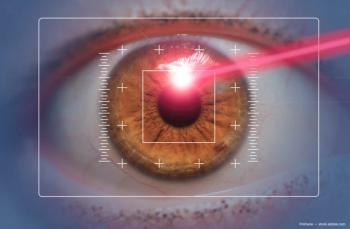
Nystagmus diagnosis begins with thorough eye exam
A careful clinical workup, along with genetic testing, can help pinpoint what is behind congenital and infantile nystagmus.
Reviewed by Arlene V. Drack, MD
The diagnosis of congenital and infantile nystagmus requires a careful clinical workup and guided genetic testing when indicated, said Arlene V. Drack, MD.
“It’s usually a sign, but not a diagnosis,” said Dr. Drack, the Ronald Keech Associate Professor for Pediatric Genetic Eye Disease Research, and director, electrophysiology, Wynn Institute for Vision Research, University of Iowa Department of Ophthalmology and Clinical Sciences, Iowa City. “There’s no magic genetic panel to diagnose nystagmus.”
Congenital/infantile nystagmus has its onset within the first year of life, but patients may present at any age. Three broad categories for causes of congenital nystagmus include: neurologic, vision-related, and oculomotor.
Neurologic
Clues to a neurologic diagnosis include a head size that is larger or smaller than normal, developmental delay, optic nerve abnormalities, and a falling off of the growth curves, Dr. Drack noted.
“In these cases, you definitely need to do magnetic resonance imaging (MRI) of the brain,” she said. “That may give you the answer.”
If the MRI is negative, proceed with electro-retinography (ERG), targeted genetic testing, or optical coherence tomography (OCT).
“A negative MRI should not be the last test in a nystagmus workup,” she said.
Vision-related
For vision-related nystagmus, look for iris transillumination, trouble seeing in the dark, photophobia in bright light, and/or a very high refractive error, Dr. Drack noted.
“You have to do a cycloplegic refraction, because untreated high refractive error can cause nystagmus,” she said.
Iris transillumination, in particular, can reveal if there is a need for OCT. If the child has trouble seeing in different lighting, an ERG test can help narrow the diagnosis.
“A visual evoked potential test can be helpful, but in my experience, it’s not as helpful as other tests,” she said.
At this point, consider genetic testing. For example, albinism has around 15 associated genes, some of which cause platelet and lung disorders.
“Parents may want pre-implantation genetic testing or other help with family planning,” Dr. Drack said.
Pediatric ophthalmologists must work closely with geneticists and genetic counselors to direct testing.
“We are much more familiar with these diagnoses than are geneticists,” she said.
Oculomotor
Oculomotor nystagmus is a diagnosis of exclusion, Dr. Drack noted.
“If there’s a normal OCT, ERG, and MRI, with no transillumination, there’s FRMD7 genetic testing,” she said. “It’s X-linked but also manifests in many females. The visual acuity and prognosis are good.”
With gene therapy now possible for some genetic eye disorders causing nystagmus, ophthalmologists should aim for a true diagnosis and not lump all patients in the oculomotor category, she added.
In a review of 202 charts done by a medical student, Morgan Bertsch, working with Dr. Drack and colleagues Michael Floyd, MD; Taylor Kehoe, BS; and Wanda Pfeifer, OC(C), they found that albinism was the most common final diagnosis (19% of congenital nystagmus patients), followed by Leber congenital amaurosis (LCA), non-LCA retinal dystrophies, and motor nystagmus.
The ranking of motor nystagmus contrasts other research that has placed the condition at the top of diagnosis rankings, but Dr. Drack wondered if a complete workup was done in those cases.
“A complete pediatric eye exam, including cycloplegic refraction, was the most helpful in narrowing it down to the site of the cause of nystagmus,” Dr. Drack said.
Research also finds that MRI is commonly the first test done for nystagmus, but that it cannot diagnose any of the three most common causes of infantile nystagmus.
Arlene V. Drack, MD
This article was adapted from Dr. Drack’s presentation at the 2016 meeting of the American Academy of Ophthalmology. Portions of this presentation are reported in Bertsch et al. Ophthalmic Genetics. 2017;38:22-33. Dr. Drack has no related financial interests related to this presentation; she has received research grant support from ProQr, Retrophin, and Spark Therapeutics, as well as the Chakraborty Foundation and the National Institutes of Health. Genetic testing for most study patients was provided by the Carver Nonprofit Genetic Testing Laboratory, University of Iowa.
Newsletter
Don’t miss out—get Ophthalmology Times updates on the latest clinical advancements and expert interviews, straight to your inbox.















































.png)


